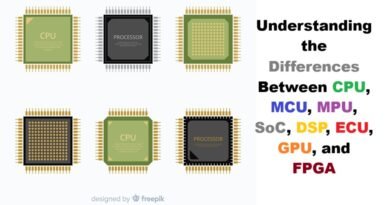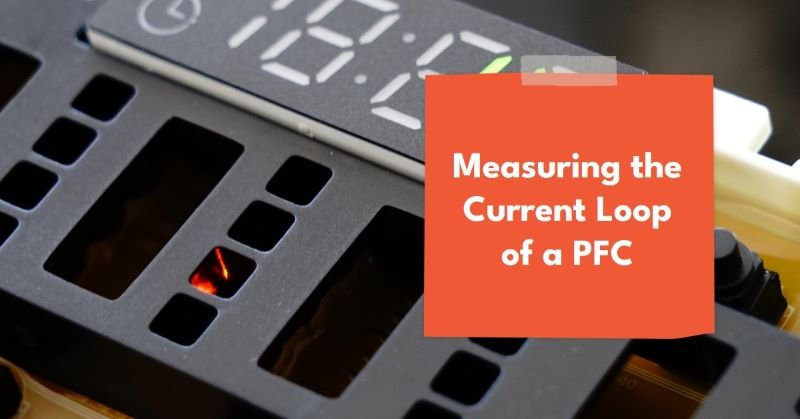Top 50 VLSI Projects Ideas: A Guide for Final Year Electronics Engineering Students
As the demand for more efficient and powerful electronic devices increases, the field of Very Large Scale Integration (VLSI) continues to evolve offering numerous opportunities for innovation. For final-year electronics engineering students, selecting the right VLSI project can be pivotal, not only for academic success but also for future career prospects. This guide presents 50 innovative VLSI project ideas that can inspire and help you choose a project that aligns with your interests and career goals.
Top 50 VLSI Project Ideas
Here we reveal the top 50 VLSI Project Ideas in detailed way:
1. FPGA-Based Implementation of Digital Filters
Overview: Digital filters are essential components in various signal processing applications, such as audio processing, communication systems, and image processing. Implementing digital filters on Field-Programmable Gate Arrays (FPGAs) offers the advantages of parallel processing, reconfigurability, and high-speed performance.
Project Scope:
- Design the Filter: Choose the type of digital filter (FIR, IIR) and design its specifications.
- Implement on FPGA: Use hardware description languages (HDL) such as VHDL or Verilog to implement the filter design on an FPGA.
- Testing and Validation: Validate the filter’s performance using test signals and compare the results with software implementations.
Benefits:
- High-speed processing due to parallelism.
- Reconfigurable nature allows for easy updates and changes.
- Real-time signal processing capabilities.
2. ASIC Design for Image Compression
Overview: Image compression is crucial for reducing storage requirements and transmission bandwidth. Developing an Application-Specific Integrated Circuit (ASIC) for image compression can lead to faster and more efficient processing compared to software-based solutions.
Project Scope:
- Choose Compression Algorithm: Select a suitable image compression algorithm (JPEG, JPEG2000, etc.).
- ASIC Design: Design the algorithm as an ASIC using HDL.
- Fabrication and Testing: Simulate, fabricate, and test the ASIC for performance and efficiency.
Benefits:
- Increased processing speed.
- Reduced power consumption compared to general-purpose processors.
- Optimized for specific application requirements.
3. Low Power VLSI Design for IoT Devices
Overview: IoT devices often operate on battery power, making energy efficiency a critical design factor. Low-power VLSI design aims to extend battery life while maintaining performance.
Project Scope:
- Power Optimization Techniques: Use techniques such as clock gating, power gating, and dynamic voltage scaling.
- Design and Simulation: Design the VLSI circuit with power optimization in mind and simulate its performance.
- Prototype Development: Develop a prototype and measure its power consumption under various conditions.
Benefits:
- Longer battery life for IoT devices.
- Improved performance-to-power ratio.
- Enhanced device longevity and reliability.
4. Design of a High-Speed ALU
Overview: The Arithmetic Logic Unit (ALU) is a critical component of any processor, responsible for performing arithmetic and logical operations. Designing a high-speed ALU enhances the overall processing power of computing systems.
Project Scope:
- Design Specifications: Define the operations and performance criteria for the ALU.
- Implementation: Use HDL to design the ALU, focusing on speed optimization techniques such as parallelism and pipelining.
- Testing: Simulate the ALU to verify its correctness and performance.
Benefits:
- Improved processing speed.
- Efficient execution of arithmetic and logical operations.
- Enhanced performance of processors in computational tasks.
5. VLSI Implementation of Cryptographic Algorithms
Overview: Cryptographic algorithms are essential for securing digital communications. Implementing these algorithms in VLSI ensures faster and more secure data encryption and decryption.
Project Scope:
- Algorithm Selection: Choose a cryptographic algorithm (e.g., RSA, AES).
- VLSI Design: Implement the algorithm in VLSI using HDL.
- Validation: Test the design for correctness, speed, and security.
Benefits:
- Faster cryptographic operations.
- Enhanced security for data communications.
- Reduced computational load on general-purpose processors.
6. Neural Network Hardware Accelerator
Overview: Neural networks require significant computational power, which can be enhanced by dedicated hardware accelerators. These accelerators improve the efficiency and speed of AI computations.
Project Scope:
- Design Specifications: Define the neural network architecture and performance criteria.
- Hardware Design: Implement the neural network on hardware using FPGAs or ASICs.
- Testing: Evaluate the performance of the hardware accelerator on various neural network tasks.
Benefits:
- Accelerated AI computations.
- Improved efficiency and performance.
- Reduced latency in neural network processing.
7. Design of a Digital Phase-Locked Loop (PLL)
Overview: A Phase-Locked Loop (PLL) is used in communication systems to synchronize signals. Implementing a digital PLL in VLSI improves its integration and performance.
Project Scope:
- Design Specifications: Define the frequency range and stability requirements.
- Digital Implementation: Use HDL to design the digital PLL.
- Testing: Simulate and validate the PLL’s performance in various scenarios.
Benefits:
- Improved signal synchronization.
- Enhanced stability and accuracy.
- Better integration in digital communication systems.
8. VLSI Design for Error Detection and Correction
Overview: Error detection and correction are critical for maintaining data integrity in digital systems. Implementing these techniques in VLSI ensures reliable data transmission and storage.
Project Scope:
- Algorithm Selection: Choose an error detection and correction algorithm (e.g., Hamming code, Reed-Solomon).
- VLSI Design: Implement the algorithm in VLSI using HDL.
- Validation: Test the design for its error detection and correction capabilities.
Benefits:
- Improved data integrity.
- Reliable communication and storage.
- Enhanced system robustness.
9. Energy-Efficient VLSI Design for Wearable Devices
Overview: Wearable devices require energy-efficient designs to extend battery life. This project focuses on optimizing VLSI designs for low power consumption while maintaining functionality.
Project Scope:
- Power Optimization Techniques: Use techniques such as multi-threshold CMOS, dynamic voltage scaling, and power gating.
- Design and Simulation: Design the VLSI circuit with energy efficiency as a priority and simulate its performance.
- Prototype Development: Develop and test a prototype to measure power consumption.
Benefits:
- Extended battery life for wearable devices.
- Improved performance-to-power ratio.
- Enhanced user experience and device longevity.
10. High-Speed Serial Communication Interface
Overview: High-speed serial communication interfaces are essential for fast data transfer between digital systems. Designing these interfaces in VLSI ensures high performance and reliability.
Project Scope:
- Design Specifications: Define the speed and reliability requirements for the interface.
- Implementation: Use HDL to design the high-speed serial communication interface.
- Testing: Simulate and validate the interface’s performance under various conditions.
Benefits:
- Faster data transfer rates.
- Improved reliability and performance.
- Enhanced system integration and communication.
11. Implementation of Advanced Encryption Standard (AES) in VLSI
Overview: The Advanced Encryption Standard (AES) is widely used for secure data encryption. Implementing AES in VLSI enhances its speed and security.
Project Scope:
- Algorithm Implementation: Implement the AES algorithm in VLSI using HDL.
- Optimization: Optimize the design for speed and area.
- Validation: Test the design for encryption and decryption performance and security.
Benefits:
- Faster encryption and decryption.
- Enhanced data security.
- Reduced computational load on general-purpose processors.
12. Design of a Low Power SRAM Memory
Overview: Static Random-Access Memory (SRAM) is a crucial component in digital systems. Designing low-power SRAM improves energy efficiency in electronic devices.
Project Scope:
- Power Optimization Techniques: Use techniques such as voltage scaling and power gating.
- Design and Simulation: Design the low-power SRAM using HDL and simulate its performance.
- Prototype Development: Develop and test a prototype to measure power consumption and performance.
Benefits:
- Improved energy efficiency.
- Extended battery life for portable devices.
- Enhanced memory performance.
13. VLSI Design for Biomedical Signal Processing
Overview: Biomedical signal processing involves analyzing physiological signals like ECG and EEG. Implementing these processes in VLSI improves real-time analysis and device integration.
Project Scope:
- Signal Processing Algorithms: Select and implement algorithms for processing biomedical signals.
- VLSI Design: Use HDL to design the signal processing system.
- Testing and Validation: Test the system with real biomedical signals to validate performance.
Benefits:
- Real-time signal processing.
- Improved accuracy and reliability.
- Enhanced integration with biomedical devices.
14. Design and Implementation of a RISC Processor
Overview: Reduced Instruction Set Computing (RISC) processors are known for their simplicity and efficiency. Designing and implementing a RISC processor in VLSI helps study its performance and applications.
Project Scope:
- Instruction Set Design: Define the instruction set for the RISC processor.
- VLSI Implementation: Use HDL to design the processor.
- Testing and Validation: Simulate and test the processor for performance and correctness.
Benefits:
- Improved processing efficiency.
- Simplified processor design.
- Enhanced understanding of RISC architecture.
15. VLSI Implementation of FFT Algorithm
Overview: The Fast Fourier Transform (FFT) is widely used in signal processing for frequency analysis. Implementing FFT in VLSI ensures real-time processing capabilities.
Project Scope:
- Algorithm Implementation: Implement the FFT algorithm in VLSI using HDL.
- Optimization: Optimize the design for speed and area.
- Validation: Test the design for performance and accuracy in signal processing tasks.
Benefits:
- Real-time frequency analysis.
- Improved processing speed.
- Enhanced signal processing capabilities.
16. Design of a High-Performance ADC
Overview: Analog-to-Digital Converters (ADC) are crucial for converting analog signals to digital form. Designing a high-performance ADC in VLSI ensures accuracy and speed in data conversion.
Project Scope:
- Design Specifications: Define the resolution, speed, and accuracy requirements.
- VLSI Design: Use HDL to design the ADC.
- Testing and Validation: Simulate and test the ADC for performance and accuracy.
Benefits:
- Improved data conversion accuracy.
- Faster conversion speed.
- Enhanced performance in digital systems.
17. Design and Simulation of a Wireless Sensor Network Node
Overview: Wireless sensor networks consist of sensor nodes that collect and transmit data. Designing a VLSI-based sensor node improves energy efficiency and communication capabilities.
Project Scope:
- Node Design: Define the functionality and design of the sensor node.
- VLSI Implementation: Use HDL to design the sensor node.
- Simulation and Testing: Simulate the node’s performance and test it in a wireless sensor network setup.
Benefits:
- Improved energy efficiency.
- Enhanced communication capabilities.
- Better integration in wireless sensor networks.
18. Low Power VLSI Design for DSP Applications
Overview: Digital Signal Processing (DSP) applications require efficient and low-power designs to process signals effectively. This project focuses on optimizing VLSI designs for DSP.
Project Scope:
- Power Optimization Techniques: Use techniques such as dynamic voltage scaling and clock gating.
- Design and Simulation: Design the DSP system with a focus on low power consumption and simulate its performance.
- Prototype Development: Develop and test a prototype to measure power consumption and performance.
Benefits:
- Improved energy efficiency.
- Enhanced DSP performance.
- Extended battery life for portable DSP devices.
19. Design of a High-Speed Multiplier
Overview: Multipliers are essential components in many digital systems, such as processors and DSPs. Designing a high-speed multiplier enhances computational capabilities.
Project Scope:
- Design Specifications: Define the performance criteria for the multiplier.
- VLSI Implementation: Use HDL to design the high-speed multiplier.
- Testing and Validation: Simulate and test the multiplier for performance and correctness.
Benefits:
- Improved computational speed.
- Enhanced performance in digital systems.
- Efficient execution of multiplication operations.
20. FPGA-Based Implementation of MIMO Systems
Overview: Multiple Input Multiple Output (MIMO) systems improve communication performance by using multiple antennas at both transmitter and receiver ends. Implementing MIMO systems on FPGAs offers flexibility and high-speed processing.
Project Scope:
- System Design: Define the MIMO system architecture and design.
- FPGA Implementation: Use HDL to implement the MIMO system on an FPGA.
- Testing and Validation: Simulate and test the system for performance and communication quality.
Benefits:
- Improved communication performance.
- Flexible and reconfigurable design.
- High-speed data processing.
21. VLSI Design for Image Processing Applications
Overview: Image processing involves various operations like filtering, compression, and enhancement. Implementing these operations in VLSI improves real-time processing capabilities.
Project Scope:
- Algorithm Selection: Select image processing algorithms to be implemented.
- VLSI Design: Use HDL to design the image processing system.
- Testing and Validation: Simulate and test the system for performance and image quality.
Benefits:
- Real-time image processing.
- Improved performance and efficiency.
- Enhanced image quality.
22. Design of an Efficient Power Management IC
Overview: Power Management Integrated Circuits (PMIC) are used to manage the power requirements of electronic devices. Designing an efficient PMIC improves energy usage and device performance.
Project Scope:
- Design Specifications: Define the power management requirements.
- VLSI Design: Use HDL to design the PMIC.
- Testing and Validation: Simulate and test the PMIC for performance and efficiency.
Benefits:
- Improved energy efficiency.
- Enhanced device performance.
- Better power management in electronic systems.
23. VLSI Implementation of Signal Compression Algorithms
Overview: Signal compression reduces data size and transmission time. Implementing compression algorithms in VLSI enhances real-time processing and efficiency.
Project Scope:
- Algorithm Selection: Choose signal compression algorithms (e.g., DCT, wavelet transform).
- VLSI Design: Use HDL to implement the algorithms in VLSI.
- Testing and Validation: Simulate and test the system for compression efficiency and speed.
Benefits:
- Reduced data size.
- Faster transmission and storage.
- Improved processing efficiency.
24. Design of a Low-Noise Amplifier
Overview: Low-noise amplifiers are used to amplify weak signals without adding significant noise. Designing a low-noise amplifier in VLSI improves signal quality in communication systems.
Project Scope:
- Design Specifications: Define the noise figure, gain, and bandwidth requirements.
- VLSI Design: Use HDL to design the low-noise amplifier.
- Testing and Validation: Simulate and test the amplifier for performance and noise levels.
Benefits:
- Improved signal quality.
- Enhanced communication performance.
- Reduced noise in amplified signals.
25. FPGA-Based Video Processing System
Overview: Video processing involves various tasks such as filtering, compression, and enhancement. Implementing these tasks on FPGAs offers high-speed processing and flexibility.
Project Scope:
- System Design: Define the video processing tasks and system architecture.
- FPGA Implementation: Use HDL to implement the video processing system on an FPGA.
- Testing and Validation: Simulate and test the system for performance and video quality.
Benefits:
- Real-time video processing.
- Improved performance and flexibility.
- Enhanced video quality.
26. Design of a Digital Clock System
Overview: Digital clocks are ubiquitous in modern electronics, providing accurate timekeeping and various additional features such as alarms and timers. Implementing a digital clock system involves designing the timing mechanism, display, and control features.
Project Scope:
- Clock Design: Design a timing circuit using a crystal oscillator or other precise timekeeping component.
- Display and Interface: Implement a digital display (e.g., LED, LCD) and user interface for setting the time and alarms.
- Additional Features: Integrate features such as multiple alarms, timers, and power-saving modes.
- VLSI Implementation: Use HDL to design the entire system for integration into a chip.
Benefits:
- Accurate timekeeping.
- Versatile and user-friendly features.
- Compact and efficient design suitable for integration in various electronic devices.
27. VLSI Design for Wireless Communication Systems
Overview: Wireless communication systems require highly efficient and reliable VLSI designs to manage data transmission and reception. These designs optimize performance and reduce power consumption.
Project Scope:
- System Components: Design transceivers, modulators, and demodulators in VLSI.
- Optimization: Focus on optimizing power consumption and signal integrity.
- Simulation and Testing: Simulate the system’s performance under different conditions and validate its reliability.
Benefits:
- Enhanced wireless communication performance.
- Reduced power consumption.
- Improved signal integrity and reliability.
28. Design and Implementation of a Temperature Sensor IC
Overview: Temperature sensors are crucial in various applications, from industrial automation to consumer electronics. Developing a temperature sensor IC ensures accurate and reliable temperature measurements.
Project Scope:
- Sensor Design: Choose the type of temperature sensor (e.g., thermistor, RTD) and design the sensing circuit.
- IC Implementation: Implement the sensor design in VLSI using HDL.
- Calibration and Testing: Calibrate the sensor for accuracy and test its performance across different temperature ranges.
Benefits:
- Accurate and reliable temperature measurements.
- Compact and integrated design.
- Suitable for a wide range of applications.
29. Low Power VLSI Design for Battery-Powered Devices
Overview: Battery-powered devices, such as smartphones and portable medical equipment, require low-power VLSI designs to extend battery life while maintaining performance.
Project Scope:
- Power Optimization Techniques: Implement techniques like dynamic voltage scaling, clock gating, and power gating.
- Design and Simulation: Design the VLSI circuit focusing on low power consumption and simulate its performance.
- Prototype Development: Develop and test a prototype to measure power consumption and performance.
Benefits:
- Extended battery life.
- Improved performance-to-power ratio.
- Enhanced user experience and device longevity.
30. Design of a High-Speed Data Converter
Overview: High-speed data converters, such as ADCs and DACs, are essential for fast and accurate data processing in digital systems. Implementing these converters in VLSI improves data conversion speed and accuracy.
Project Scope:
- Converter Design: Define the resolution, speed, and accuracy requirements.
- VLSI Implementation: Use HDL to design the high-speed data converter.
- Testing and Validation: Simulate and test the converter for performance and accuracy.
Benefits:
- Faster data conversion.
- Improved accuracy and reliability.
- Enhanced performance in digital systems.
31. VLSI Design for Smart Grid Applications
Overview: Smart grids use advanced technology to enhance energy distribution and management. Developing VLSI systems for smart grids improves their efficiency and reliability.
Project Scope:
- System Components: Design components such as smart meters, communication modules, and control units.
- Optimization: Focus on optimizing power usage and data communication.
- Simulation and Testing: Simulate the smart grid system and validate its performance.
Benefits:
- Enhanced energy distribution and management.
- Improved efficiency and reliability.
- Better integration with existing grid infrastructure.
32. Implementation of Machine Learning Algorithms in VLSI
Overview: Machine learning algorithms require significant computational power, which can be enhanced by implementing them in VLSI. This project focuses on developing VLSI designs for faster and more efficient machine learning computations.
Project Scope:
- Algorithm Selection: Choose suitable machine learning algorithms (e.g., neural networks, SVMs).
- VLSI Implementation: Use HDL to implement the algorithms in VLSI.
- Testing and Validation: Simulate and test the system’s performance on various machine learning tasks.
Benefits:
- Faster machine learning computations.
- Improved efficiency and performance.
- Reduced latency in data processing.
33. Design of a Digital Signal Synthesizer
Overview: Digital signal synthesizers generate precise and customizable signals for various applications, such as communication systems and test equipment. Implementing these synthesizers in VLSI ensures high performance and flexibility.
Project Scope:
- Signal Generation: Define the types of signals to be synthesized (e.g., sine, square, triangular).
- VLSI Implementation: Use HDL to design the digital signal synthesizer.
- Testing and Validation: Simulate and test the synthesizer for accuracy and performance.
Benefits:
- Precise and customizable signal generation.
- High performance and flexibility.
- Enhanced applications in communication and test systems.
34. VLSI Design for Automotive Applications
Overview: Automotive electronics require robust and efficient VLSI designs to improve safety, performance, and energy efficiency. This project focuses on developing VLSI systems for various automotive applications.
Project Scope:
- System Components: Design components such as ECUs, sensors, and control units.
- Optimization: Focus on optimizing power consumption and reliability.
- Simulation and Testing: Simulate and test the VLSI systems for automotive performance and safety standards.
Benefits:
- Improved safety and performance.
- Enhanced energy efficiency.
- Better integration with automotive systems.
35. Implementation of a Network-on-Chip (NoC)
Overview: Network-on-Chip (NoC) designs enhance communication within multi-core processors by providing efficient and scalable interconnects. Implementing NoC in VLSI improves data transfer and system performance.
Project Scope:
- NoC Architecture: Define the architecture and communication protocols.
- VLSI Implementation: Use HDL to design the NoC.
- Testing and Validation: Simulate and test the NoC for performance and scalability.
Benefits:
- Improved inter-core communication.
- Enhanced system performance and scalability.
- Reduced latency and increased data transfer rates.
36. Design of a Low Power Digital Clock
Overview: A low-power digital clock is designed to minimize energy consumption while providing accurate timekeeping. This project focuses on optimizing the clock’s power usage.
Project Scope:
- Power Optimization Techniques: Use techniques like clock gating and dynamic voltage scaling.
- Design and Simulation: Design the low-power digital clock using HDL and simulate its performance.
- Prototype Development: Develop and test a prototype to measure power consumption and accuracy.
Benefits:
- Minimized energy consumption.
- Accurate timekeeping.
- Suitable for battery-powered and portable devices.
37. VLSI Design for Real-Time Data Processing
Overview: Real-time data processing requires high-performance VLSI designs to handle data streams efficiently. This project focuses on developing VLSI systems for real-time applications.
Project Scope:
- System Design: Define the data processing requirements and architecture.
- VLSI Implementation: Use HDL to design the real-time data processing system.
- Testing and Validation: Simulate and test the system for performance and response times.
Benefits:
- Improved response times.
- Enhanced performance in real-time applications.
- Efficient handling of data streams.
38. Design of an Efficient Memory Controller
Overview: Memory controllers manage data access and storage, impacting system performance. Designing an efficient memory controller in VLSI optimizes data handling and improves overall system efficiency.
Project Scope:
- Controller Design: Define the memory access protocols and optimization strategies.
- VLSI Implementation: Use HDL to design the memory controller.
- Testing and Validation: Simulate and test the controller for performance and efficiency.
Benefits:
- Optimized data access and storage.
- Improved system performance.
- Enhanced memory management.
39. VLSI Implementation of Audio Processing Algorithms
Overview: Audio processing involves tasks such as filtering, compression, and enhancement. Implementing these algorithms in VLSI ensures real-time processing and improved sound quality.
Project Scope:
- Algorithm Selection: Choose audio processing algorithms to be implemented.
- VLSI Design: Use HDL to design the audio processing system.
- Testing and Validation: Simulate and test the system for performance and sound quality.
Benefits:
- Real-time audio processing.
- Improved sound quality.
- Enhanced performance in audio applications.
40. Design of a High-Speed I/O Interface
Overview: High-speed Input/Output (I/O) interfaces are crucial for fast data transfer between digital systems. Designing these interfaces in VLSI ensures high performance and reliability.
Project Scope:
- Interface Design: Define the speed and reliability requirements.
- VLSI Implementation: Use HDL to design the high-speed I/O interface.
- Testing and Validation: Simulate and test the interface for performance and reliability.
Benefits:
- Faster data transfer rates.
- Improved reliability and performance.
- Enhanced system integration and communication.
41. FPGA-Based Control Systems
Overview: Control systems manage and regulate various processes in automation and industrial applications. Implementing these systems using FPGAs offers precise and reliable control.
Project Scope:
- System Design: Define the control algorithms and system architecture.
- FPGA Implementation: Use HDL to implement the control system on an FPGA.
- Testing and Validation: Simulate and test the system for performance and reliability.
Benefits:
- Precise and reliable control.
- High-performance and flexibility.
- Enhanced automation and industrial applications.
42. Design of a Low Power Voltage Regulator
Overview: Voltage regulators maintain a constant output voltage regardless of changes in input voltage or load conditions. Designing a low-power voltage regulator in VLSI improves energy efficiency in electronic circuits.
Project Scope:
- Regulator Design: Define the voltage regulation requirements and optimization strategies.
- VLSI Implementation: Use HDL to design the low-power voltage regulator.
- Testing and Validation: Simulate and test the regulator for performance and efficiency.
Benefits:
- Improved energy efficiency.
- Stable voltage output.
- Enhanced performance in electronic circuits.
43. VLSI Design for Digital Communication Systems
Overview: Digital communication systems require efficient VLSI designs to manage data transmission, modulation, and error correction. This project focuses on optimizing these systems for performance and reliability.
Project Scope:
- System Components: Design components such as modulators, demodulators, and error correction circuits.
- VLSI Implementation: Use HDL to design the digital communication system.
- Testing and Validation: Simulate and test the system for performance and reliability.
Benefits:
- Improved data transmission quality.
- Enhanced performance and reliability.
- Efficient communication system design.
44. Implementation of Digital Modulation Techniques in VLSI
Overview: Digital modulation techniques are crucial for efficient data transmission in communication systems. Implementing these techniques in VLSI enhances their performance and reliability.
Project Scope:
- Modulation Techniques: Select digital modulation techniques (e.g., QAM, PSK) for implementation.
- VLSI Design: Use HDL to design the modulation circuits.
- Testing and Validation: Simulate and test the system for modulation performance and reliability.
Benefits:
- Improved data transmission quality.
- Enhanced modulation performance.
- Reliable communication systems.
45. Design of a High-Speed Digital Mixer
Overview: Digital mixers combine multiple signals into one or more output signals, crucial in communication systems. Designing a high-speed digital mixer in VLSI improves signal processing efficiency.
Project Scope:
- Mixer Design: Define the mixing requirements and architecture.
- VLSI Implementation: Use HDL to design the high-speed digital mixer.
- Testing and Validation: Simulate and test the mixer for performance and efficiency.
Benefits:
- Faster signal processing.
- Improved mixing performance.
- Enhanced communication system integration.
46. VLSI Implementation of Control Algorithms
Overview: Control algorithms regulate various processes in real-time applications. Implementing these algorithms in VLSI ensures precise and reliable control.
Project Scope:
- Algorithm Selection: Choose control algorithms to be implemented.
- VLSI Design: Use HDL to design the control system.
- Testing and Validation: Simulate and test the system for performance and reliability.
Benefits:
- Precise and reliable control.
- Improved performance in real-time applications.
- Enhanced system integration and efficiency.
47. Design of a Secure VLSI System
Overview: Security is a critical concern in modern digital systems. Designing a secure VLSI system involves integrating features such as encryption, authentication, and tamper detection.
Project Scope:
- Security Features: Define the security requirements and features.
- VLSI Implementation: Use HDL to design the secure system.
- Testing and Validation: Simulate and test the system for security and performance.
Benefits:
- Enhanced data and communication security.
- Reliable and tamper-resistant design.
- Improved system integrity and trust.
48. FPGA-Based Signal Processing System
Overview: Signal processing involves various tasks such as filtering, compression, and transformation. Implementing these tasks on FPGAs ensures high-performance and real-time processing.
Project Scope:
- System Design: Define the signal processing tasks and architecture.
- FPGA Implementation: Use HDL to design the signal processing system on an FPGA.
- Testing and Validation: Simulate and test the system for performance and efficiency.
Benefits:
- High-performance signal processing.
- Real-time data handling.
- Enhanced flexibility and scalability.
49. Low Power VLSI Design for Medical Devices
Overview: Medical devices require low-power designs to extend battery life while maintaining high performance. This project focuses on developing VLSI designs optimized for medical applications.
Project Scope:
- Power Optimization Techniques: Implement techniques like dynamic voltage scaling and clock gating.
- Design and Simulation: Design the low-power VLSI circuit for medical devices and simulate its performance.
- Prototype Development: Develop and test a prototype to measure power consumption and reliability.
Benefits:
- Extended battery life for medical devices.
- Improved performance-to-power ratio.
- Enhanced patient care and device reliability.
50. Design of a High-Speed Data Encryption System
Overview: Data encryption ensures secure communication and data protection. Designing a high-speed data encryption system in VLSI enhances security and performance.
Project Scope:
- Encryption Algorithm: Select and optimize an encryption algorithm (e.g., AES).
- VLSI Implementation: Use HDL to design the high-speed encryption system.
- Testing and Validation: Simulate and test the system for encryption speed and security.
Benefits:
- Secure and fast data encryption.
- Enhanced data protection and privacy.
- Improved performance in secure communication systems.
Tips for Successfully Completing Your VLSI Project
Here are some practical tips to help you navigate the complexities of your VLSI project and achieve successful outcomes.
Project Planning and Management
Begin by defining clear objectives and milestones. Break down your VLSI project into manageable tasks and set realistic deadlines for each phase. Use project management tools to track your progress and make adjustments as needed. Regularly reviewing your plan ensures you remain on course and can address any issues promptly.
Effective Time Management
Time management is crucial for the successful completion of your VLSI project. Prioritize tasks based on their importance and urgency. Allocate sufficient time for research, design, testing, and documentation phases. Avoid last-minute rushes by adhering to your planned schedule and making consistent progress.
Collaboration with Peers and Mentors
Collaboration is key in VLSI projects. Engage with your peers and mentors frequently to share insights and troubleshoot problems. Regular meetings foster a collaborative environment where ideas can be exchanged and potential issues can be identified early. Leverage the expertise of your mentors to guide you through complex aspects of your project.
Utilizing Available Resources and Tools
Maximize the use of available resources and tools. Familiarize yourself with VLSI design software and simulation tools. Online forums, academic journals, and libraries are valuable resources for research and troubleshooting. Don’t hesitate to seek help from academic advisors or join study groups to enhance your understanding.
Troubleshooting Common Challenges
Challenges are inevitable in VLSI projects. Develop a systematic approach to troubleshooting by documenting the problem, hypothesizing potential solutions, and testing them iteratively. Keep a log of issues encountered and solutions implemented, as this can be a valuable reference throughout your project.
Effective Documentation
Documenting your VLSI project is essential for both internal tracking and final presentation. Maintain comprehensive records of your design process, including schematics, test results, and iterations. Clear and detailed documentation not only aids in project management but also demonstrates your work’s thoroughness during evaluations.
Preparing for Final Presentation and Defense
Prepare thoroughly for your final presentation and defense. Organize your findings and results logically, and practice presenting them clearly and concisely. Anticipate potential questions and be ready to discuss your project’s methodology, challenges, and outcomes. Confidence and clarity in your presentation can significantly impact the evaluation of your work.
Conclusion
In conclusion, Choosing the right VLSI project can be a stepping stone to a successful career in electronics engineering. These 50 project ideas cover a broad range of applications and challenges, providing ample opportunities for innovation and practical learning. Select a project that resonates with your interests and career aspirations, and dive into the fascinating world of VLSI design and implementation.








